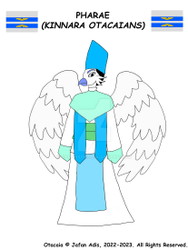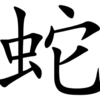Sign In
CloseNOTE: This species description contains information that is suitable only for mature audiences, even though it contains brief mentions of mature topics. If this is something you do not want to read, click the back button. Furthermore, this is an ALIEN SPECIES FROM ANOTHER PLANET, as such, their traditions, values, culture, attitudes, history, and personalities will be different from your own, if you don't like what you are about to read, remain silent, stop reading, or comment in a professional manner without insulting the author. In addition, the attitudes and values of this alien race are not a reflection of who the author is as a person. READ AT YOUR OWN DISCRETION! THIS IS A CLOSED SPECIES WHICH IS NOT FOR SALE!
Dinak
The Dinaks are a race of half-mammal half-reptile humanoids that hail from the dense rainforest of Patrasha. Historically, they were in the second lowest in the Torai. According to legends, the serpent, Umanah, who birthed the Dinaks vomited the venom which poisoned the land and also created the Tot’Kocha.
Alternate Names: Naga Otacaians (By Humans)
Main Nation: The Dinak Assembly
Native To: Umanah’s Landing (According to legends), Patrasha (Plausible)
Species: Otacaian
Classification: Hermaphroditic Humanoid Reptilian Mammals
Diet: Omnivorous
Skin Colors: Cyan, Green, Brown, Tan, Orange, Turquoise, Gray, Yellow
Hair Colors: Pale pink to dark blue
Blood Color: Magenta
Lifespan: At least 70-90 years
Size: 4’2-5’3
Living Style: Rural, Nomadic
Language: Otacaian Basic (Dinak Dialect)
Gender Status: Monogendered
Famous Cuisine: Tusmaq Paste
Earth Accent Comparison: Philippine English
Anatomy
The Dinaks are hermaphroditic mammals with reptilian qualities, but their body structure strongly is humanoid. They have a smooth Human-like facial structure, but they have larger eyes than Humans that are almond shaped. They have pronounced noses, high and rounded cheekbones, delicate chins and elfin ears.
They grow hair which ranges from pale pink to dark blue, which is mostly concentrated on their scalps and above their eyes in the form of eyebrows. They tend to keep their hair long as a symbol of beauty. They can adorn their hair in elaborate fashions, in the form of dreadlocks, braids, or cornrows.
They have soft voices which range in pitch and a masculine presenting humanoid upper body with thick pectorals, two arms, which have five fingered hands with hard black claws. Their lower bodies are feminine presenting humanoid, with humanoid hips, thighs and calves. Their feet however resemble that of a frog with three widely spaced toes with webbing in between. They have sharp canines and a thick fork-like tongue.
A Dinak can grow up to 4’9 - 5’5 and their skin colors can be green, gray, orange, yellow, tan, brown, turquoise, or cyan. Their skin is scaly in appearance but soft. They also have two rows of freckles, slightly darker than their skin color, going down each side of their bodies, from their shoulders to their ankles.
Dinaks have both male and female reproductive organs, they can either self-impregnate or mate with one another. When they self-impregnate, the child will be a clone of the parent, but when mating with one another, the parents trade DNA with each other, thus giving birth to a child which is a genetic combination of both parents. They are also sexually compatible with most of the other Otacaians and can get pregnant from intercourse with another Otacaian, but the child will be 100% Dinak.
They will go through a period called The Blossoming, twice a year. During this time, Dinaks can activate their hormones to reproduce and become very promiscuous as a result. In extreme cases, Dinaks going through The Blossoming must engage in intercourse, or they could die from shock.
It should also be noted that they are the only Otacaians except for the Rumaeri who are well-adapted to water. They can see clearly in freshwater and saltwater environments, and they can hold their breaths for long periods, sometimes up to 20 minutes. This is because they have large spleens that act as oxygen stores.
Personality
The Dinaks are noted for their stoicism in first meetings, which can melt away to openness, directness, loyalty, and honesty. Many are bitter due to their low standing within Otacaia and keep to themselves. Even when fraternizing with other races they tend to be very guarded. Dinaks value chivalry and will respect those who have shown qualities of bravery over those who are meek. They are also known to be hedonistic and value intimacy as a form of trust and can be quite powerful lovers. Another attribute they are overlooked for is their remarkable intelligence and creativity.
Domain
The Dinaks are native to the vast jungle rainforests of Patrasha, one of the most dangerous and mysterious environments in Otacaia.
Government
The Dinaks in Patrasha are part of the Dinak Assembly. Much of the Assembly is shrouded in mystery. They maintain an isolationist government like the Verrean-Qelur Alliance but unlike the Verrean-Qelur Alliance they refuse to trade with other countries and non-Dinaks are not welcome into their domains. There are many states within the Dinak Assembly, each with their own laws and cultures.
Politics
Because of their association with, and worship of Umanah, their rocky history with the High Ones, as well as the differences of many other cultures, they are often distrusted or misunderstood. Although the states within the Dinak Assembly shun non-Dinaks and trade is discouraged, some states within the Assembly have decided to initiate trade with the rest of Otacaia, the most lucrative export being slaves. There is currently a small civil war going on within the Assembly against these slave trading states.
Due to the Blossoming, there is also an idea that Dinaks are promiscuous and have often been targets of unwanted advances and are fetishized by other Otacaians. Many are forced into prostitution, and they are a popular target for slavers. These Dinak prostitutes are either indentured servants or slaves who are sold to brothels, casinos, and bathhouses, sometimes alongside Rumaeri or Opar-Han prostitutes. Because they are hermaphrodites, these prostitutes have versatile clientele, and can present themselves as either males, females, or non-binary to their clients. Some slavers have also taken to breeding Dinaks like cattle or dogs.
Other Otacaians are attracted to Dinaks due to some qualities found attractive within their race; body shape (Golars, Opar-Han, Verreans, Jithrans), skin (Akryans, Rumaeri), ears, (Opar-Han), hair (Bannarai, Jithrans, Opar-Han and Golars), biological sex (Enalla, Rumaeri, Verreans, Opar-Han, Jithrans, Golars). Other Otacaians, mainly females, have even written poems and fictional stories about Dinak protagonists which portray them in an exaggerated, stereotypical, or unrealistic light. Some Dinaks use this fetishization to their advantage by manipulating their admirers.
There are some Dinaks who managed to find some acceptance and they can participate in some events and can even form genuine friendships or romantic relationships with other races.
Culture and Society
In Dinak culture, when two people are believed to be destined for one another, they become the others Arwan, or “soulmate” similar to the “Yarhaan” of Opar-Han Culture. When the two individuals decide to become Arwan, it is usually for life, they are expected to be with one another until death. Polyamorous relationships and casual sex are tolerated within Dinak culture, but it is strongly encouraged for them to form monogamous relationships and have children with their Arwan.
Since they were by legend created by Umanah, many revere them as their parent. As such, no Dinak would ever name their child Umanah. Dinaks are taught from birth to maintain dignity in the face of injustice or tragedy, especially with situations or circumstances beyond their control. “Yunta” or “endure" is a frequent saying for Dinaks when in hopeless situations. But once a hopeless situation is within their power to manipulate, it is expected to take control of it.
The majority of Dinaks identify as non-binary and prefer to be referred to with they/them pronouns. Dinaks living within the Dinak Assembly strictly present themselves as non-binary. Like the Pharae, those living within the Dinak Assembly do not have a clear understanding of the differences between the male and female gender. There is also no word for male, female, mother, father, etc. Dinak parents are referred to as “Omoni” or “Parent”.
They believe that “male” and “female” have no real meaning and would not assign themselves as such because the Dinaks living in the Assembly believe the idea of gender to be ridiculous.
Dinak prostitutes, slaves, and servants outside the Dinak Assembly are forced to adopt a gender depending on their masters’ wishes. Some free Dinaks, especially in the Bannarai Republic, have adopted the idea of gender. These free Dinaks can identify as either male or female, though the majority still choose to identify as non-binary.
Nudity is something quite acceptable for Dinaks and they are not embarrassed by showing their bodies, similarly to how the Bannarai and Verreans view nudity sometimes.
Religious Practices
Many Dinaks practice Umanah Worship. They believe Umanah is their creator and parent and that they are above all else, even the Pharae. The Dinaks pray to Umanah for luck, for love, or to receive a blessing. When statues and figurines of Umanah are encountered, they will kowtow to these images and kiss them.
Clothing
The Dinaks’ attire can be very simple, they will wear mainly tunics, skirts, loincloths, and some have adopted more mainstream Otacaian clothing wearing harem pants, and at times an open vest with an obi-like sash with a part of it going down in the middle between their legs. They are often barefoot, and will also wear bracelets, necklaces, and rings, depending on where they live.
The Dinaks from Patrasha will adorn themselves in jewelry and have finer, more colorful clothes. Dinak servants and slaves will have lower quality clothing which mimics the fashion of the country they are residing in. When hunting, swimming, fishing, or patrolling the jungles, Patrasha Dinaks will be naked to blend in with their surroundings.
Food
The Dinaks are primarily omnivorous. Eggs and fish are staples of their diet, but they will also eat small amphibians, birds, small reptiles, small mammals, rodents, and insects. They will also eat vegetables, fruit, roots and starches. Dinaks will never eat serpents or their eggs due to their association with Umanah. Much of their cuisine is unknown due to their secretive nature, but a widely talked about food Dinaks discuss is Tusmaq Paste, a type of food paste made from the roots of the Kingalan Plant native to Patrasha and the surrounding islands, this paste can be mixed with salt or vegetables, sugar or fruits, even with honey or bugs for added flavor.
The Dinaks, Otacaia © Jafan Adis, 2022-2023. All Rights Reserved.
Submission Information
- Views:
- 37
- Comments:
- 0
- Favorites:
- 0
- Rating:
- General
- Category:
- Visual / Digital




